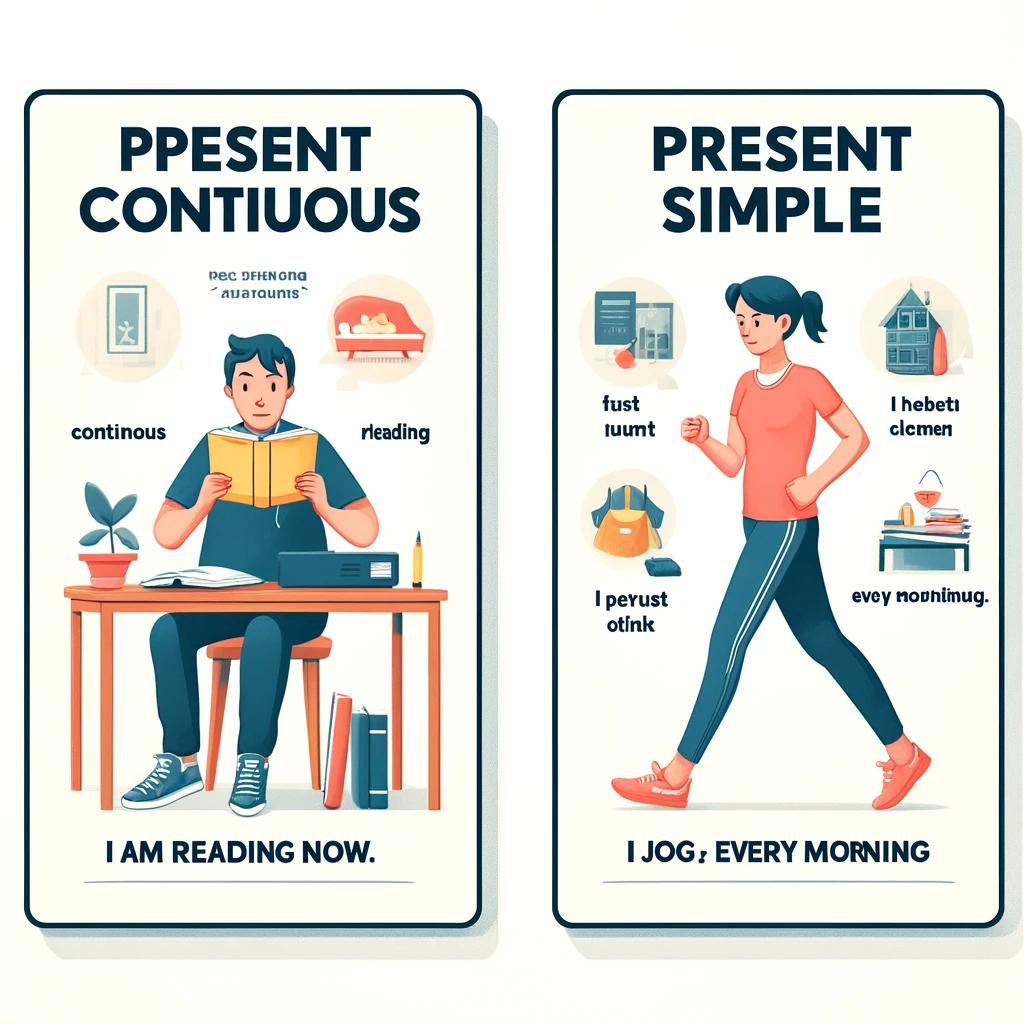Mastering English grammar involves understanding the nuances between various tenses. Among the most commonly used tenses are the Present Continuous and the Present Simple. Knowing when and how to use these tenses correctly can greatly improve your fluency and clarity in English. In this article, we will explore the differences between the Present Continuous and Present Simple tenses, providing examples and practical tips to help you use them effectively.
Present Simple Tense
The Present Simple tense is used to describe actions that are habitual or generally true. It is often employed for routines, facts, and universal truths. The structure for the Present Simple tense is straightforward:
- Affirmative: Subject + base form of the verb (add -s or -es for third-person singular)
- Example: "She walks to school every day."
- Negative: Subject + do/does not + base form of the verb
- Example: "He does not like coffee."
- Interrogative: Do/Does + subject + base form of the verb?
- Example: "Do you play the guitar?"
Usage Examples
- Habits and Routines: "I usually read before bed."
- Facts and General Truths: "The Earth orbits the Sun."
- Scheduled Events: "The train leaves at 6 PM."
Present Continuous Tense
The Present Continuous tense, also known as the Present Progressive tense, describes actions that are happening right now or around the current period. It is also used for future plans or arrangements. The structure for the Present Continuous tense is as follows:
- Affirmative: Subject + am/is/are + verb + -ing
- Example: "She is walking to school right now."
- Negative: Subject + am/is/are not + verb + -ing
- Example: "He is not drinking coffee."
- Interrogative: Am/Is/Are + subject + verb + -ing?
- Example: "Are you playing the guitar?"
Usage Examples
- Actions Happening Now: "I am reading a book."
- Temporary Situations: "They are staying with friends this week."
- Future Plans: "We are meeting our friends tomorrow."
Key Differences Between Present Simple and Present Continuous
Understanding when to use the Present Simple versus the Present Continuous can be challenging. Here are the key differences to keep in mind:
- Time Frame:
- Present Simple: Refers to habitual actions or general truths.
- Example: "He eats breakfast at 7 AM."
- Present Continuous: Refers to actions happening at the moment or temporary situations.
- Example: "He is eating breakfast right now."
- Present Simple: Refers to habitual actions or general truths.
- Nature of Action:
- Present Simple: Actions are regular or permanent.
- Example: "She works at a bank."
- Present Continuous: Actions are in progress or temporary.
- Example: "She is working on a new project."
- Present Simple: Actions are regular or permanent.
- Frequency Adverbs:
- Present Simple: Often used with adverbs of frequency (always, usually, never).
- Example: "I always drink coffee in the morning."
- Present Continuous: Rarely used with frequency adverbs.
- Example: "I am always forgetting my keys."
- Present Simple: Often used with adverbs of frequency (always, usually, never).
Tips for Using Present Simple and Present Continuous
- Identify the Nature of the Action: Determine if the action is a regular habit or a current ongoing activity. This will help you choose the correct tense.
- Look for Time Indicators: Words like "now," "at the moment," and "currently" suggest the Present Continuous, while "always," "often," and "usually" indicate the Present Simple.
- Practice Regularly: Use exercises, read English books, and listen to English audiobooks to see these tenses in context. Practice forming sentences in both tenses to build your confidence.
Conclusion
Differentiating between the Present Continuous and Present Simple tenses is crucial for clear and accurate communication in English. By understanding their structures, usage, and key differences, you can improve your grammar skills and become more fluent in English. Remember to practice regularly and immerse yourself in English through reading and listening to enhance your learning experience.
For more tips and resources on learning English, Download Bookvo for IOS or Android, where you can read and listen to audiobooks simultaneously, and explore a wide range of English books with built-in translation support.










